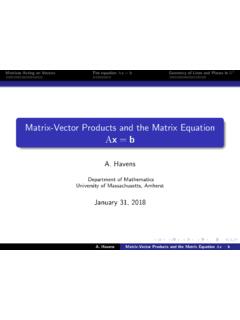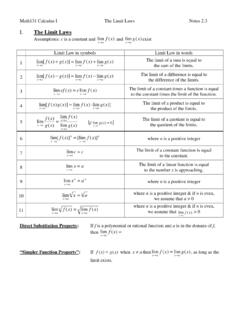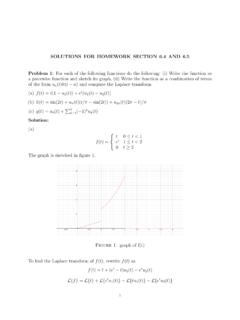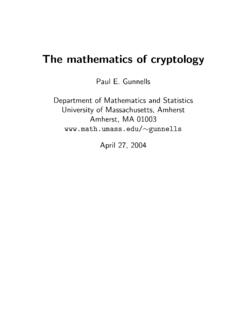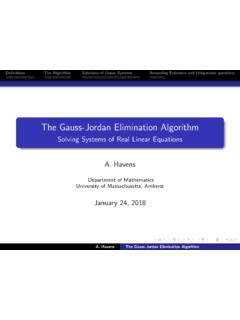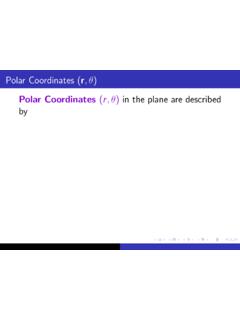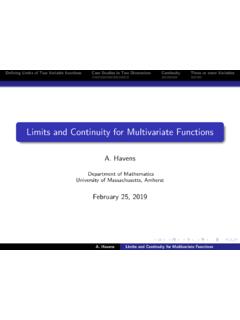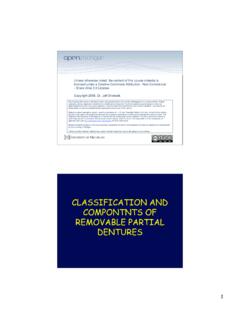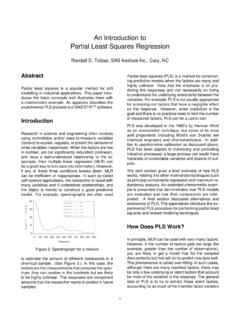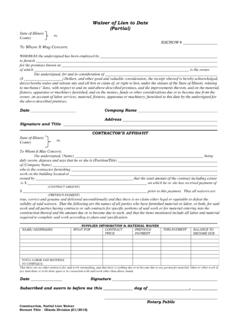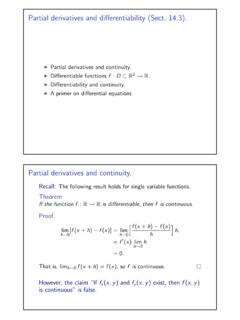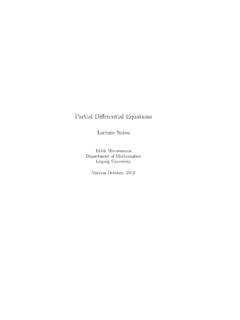Transcription of Multivariate Functions and Partial Derivatives
1 MULTIVARIABLE Functions AND Partial DERIVATIVESA. HAVENSC ontents0 Functions of Several of Two or More Variables .. of Multivariate Functions .. and Level Sets .. Functions of Vector Inputs ..51 Partial Derivatives of Bivariate Functions .. Derivatives for Functions of Three or More Variables .. Derivatives .. Differential Equations .. Chain Rule .. Differentiation .. 222 Tangent Planes, Linear Approximation, and Tangent Plane to a Graph .. Approximation .. Total Differential.
2 273 The Gradient and Directional Directional Derivative .. Gradient .. Spaces and Normal Vectors .. 324 Extreme Values and extrema and critical points .. second derivative test .. and the Extreme Value Theorem .. Optimization and the method of Lagrange Multipliers .. 485 Further Problems52i2/21/20 Multivariate Calculus: Multivariable FunctionsHavens0. Functions of Several Variables Functions of Two or More real-valued function of two variables, or a real-valuedbivariate function, is a rulefor assigning a real number to any ordered pair (x,y) of real numbers in some setD R2.
3 We oftenlabel such Functions by a symbol, such asf, and writef(x,y) for the value offwith input (x,y).The inputsxandyare calledindependent variables. The setD= Dom(f) is called thedomain off. The set of all valuesfattains overDis called therange offorimage ofDbyf:Range(f) =f(D) ={z R|z=f(x,y),(x,y) D}.One may sometimes specify function labels and domain by writing things like f:D R , or g:E R , whereDandEare known subsets ofR2. This is meant to emphasize the interpretationof the function as amapfrom a region or subset of the plane to the real numbers.
4 If no domainis specified, one should assume that Dom(f) is the largest set possible for the specified rule,meaning one includes any ordered pair (x,y) for which the rule gives a well defined valuef(x,y). functionf(x,y) = x2+y2is a bivariate function which may be interpreted asreturning, for a given point (x,y), its distance from the origin (0,0) in rectangular coordinates onR2. It is well defined for all points, since the expressionx2+y2 0 for all (x,y), and tis welldefined for any nonnegative real numberst.
5 Thus the domain is Dom(f) =R2. The range is allnonnegative real numbers, since for any given nonnegative reald, one can find points satisfyingd= x2+ , we can say then that thepre-imageof the valuedis the setf 1({d}) :={(x,y)|x2+y2=d2},which is just the origin-centered circle of radiusdor (0,0), ifd >0, ord= 0 respectively. Thus,the image/range offisf(R2) =R 0= [0, ). domain of the functionf(x,y) = arctan(y/x) is the set of all ordered pairs (x,y)withx6= 0, ,Dom arctan(y/x) =R2 {(x,y)|x= 0}.Exercise you give a geometric interpretation of the apparent discontinuity ofz=arctan(y/x) along theyaxis?]
6 (Hint: think about what arctan(y/x) means geometrically. If stuck,examine figure 4 in section , where the function is revisited.)Exercise and sketch the natural domains of the following Functions :(a)f(x,y) = 36 4x2 9y2,(b)g(x,y) = cos(x y) cos(x+y),(c)w(u,v) = sin uarcsin(v) (d)k( , ) = sec ln(2 + cos + sin ) (e) (Challenge)h(x,y) = (xy)ln(e y x2). function ofnvariables is a ruleffor assigning a valuef(x1,..,xn) to a collectionofnvariables, which may be given as elements of a subsetD Rn. Thus,f:D Ris a real-valuedmap from orderedn-tuples of real numbers taken from the functionF(x,y,z) =GMmx2+y2+z2=GMm r 2represents the magnitude of the force acentral body of massMat (0,0,0) exerts on a smaller object of massmpositioned at (x,y,z) R3,whereGis a constant, called theuniversal gravitational constant.
7 The force is attractive, directed12/21/20 Multivariate Calculus: Multivariable FunctionsHavensalong a line segment connecting to the two bodies. Thus, to properly describe the gravitationalforce, we d need to construct avector field. This idea will be described later in the are thelevel sets,F 1({k}), of the gravitational force? Since objects each of massmatequal distances should experience the same attractive force towards the central mass, we shouldexpect radially symmetric surfaces as our level sets, , we should expect spheres!
8 Indeed,k=F(r) =GMm r 2= r 2=GMmk, whence the level set for a force of magnitudekis a sphere ofradius out appropriate set theoretic definitions of image and pre-image for annvariable functionf(x1,..,xn).Exercise the natural domain of the functionf(x,y,z) =1x2+y2 z2 1as a subset ofR3. What sort of subset is the pre-imagef 1({1})? Graphs of Multivariate graph of a bivariate functionf:D Ris the locus of points (x,y,z) R3suchthatz=f(x,y):Gf:={(x,y,z) R3|z=f(x,y),(x,y) D}.For nice enough bivariate functionsf, the graph carves out a surface in 3-space, the shadowof which is the image ofDunder the embedding ofR2as thexy-plane inR3.
9 This allows one tovisualize much of the geometry of the graph and use it to study the functionf(x,y) by treating itas a height function for a surface over the image ofDin the functionf(x,y) = 4 14(x2+y2). To understand the graph ofz=f(x,y),we can studytrace curves. The vertical trace curves are curves made by intersecting the graph withplanes of either , ify=kis constant, the equationz= 4 14(x2+k2) gives a downward opening parabolain the planey=k, with vertex at (0,k,4 k2/4). For larger|k|, the vertex has lowerzheight, andfork= 0 we get a parabola in thexz-plane with equationz= 4 x4/4 and the maximum heightvertex at (0,0,4).
10 By symmetry, we have a familiar story in planesx=kwith parabolae whose vertices are(k,0,4 k2/4), and the maximum height vertex is also at (0,0,4).Finally, we study thehorizontal traces, which correspond to constant heights. For constantz=k,we get the equationk= 4 14(x2+y2) = 16 4k=x2+y2,which describes a circle of radius 2 4 surface is thus a downward opening circular paraboloid, as pictured in figure , Functions in greater than 3 variables are not so readily amenable to such a visu-alization. We can still define a graph for a function of many graph of a Multivariate functionf:D Rofnvariables is the locus of points( ,xn,xn+1) Rn+1such thatxn+1=f(x1.)
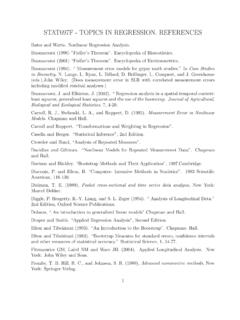
![[Chapter 5. Multivariate Probability Distributions]](/cache/preview/1/5/9/1/5/3/9/b/thumb-1591539b1a407f741d1c8ef6013023a0.jpg)
